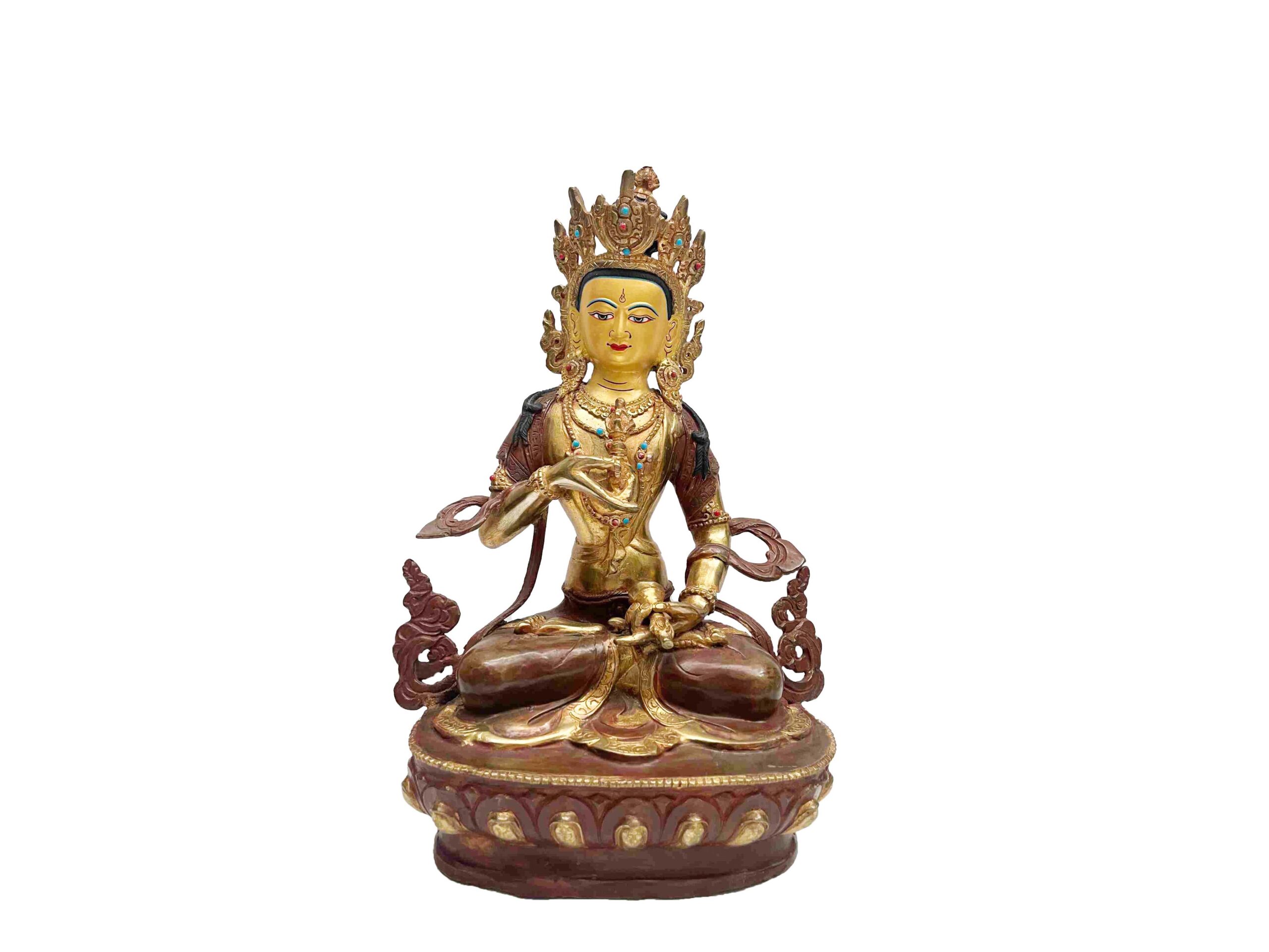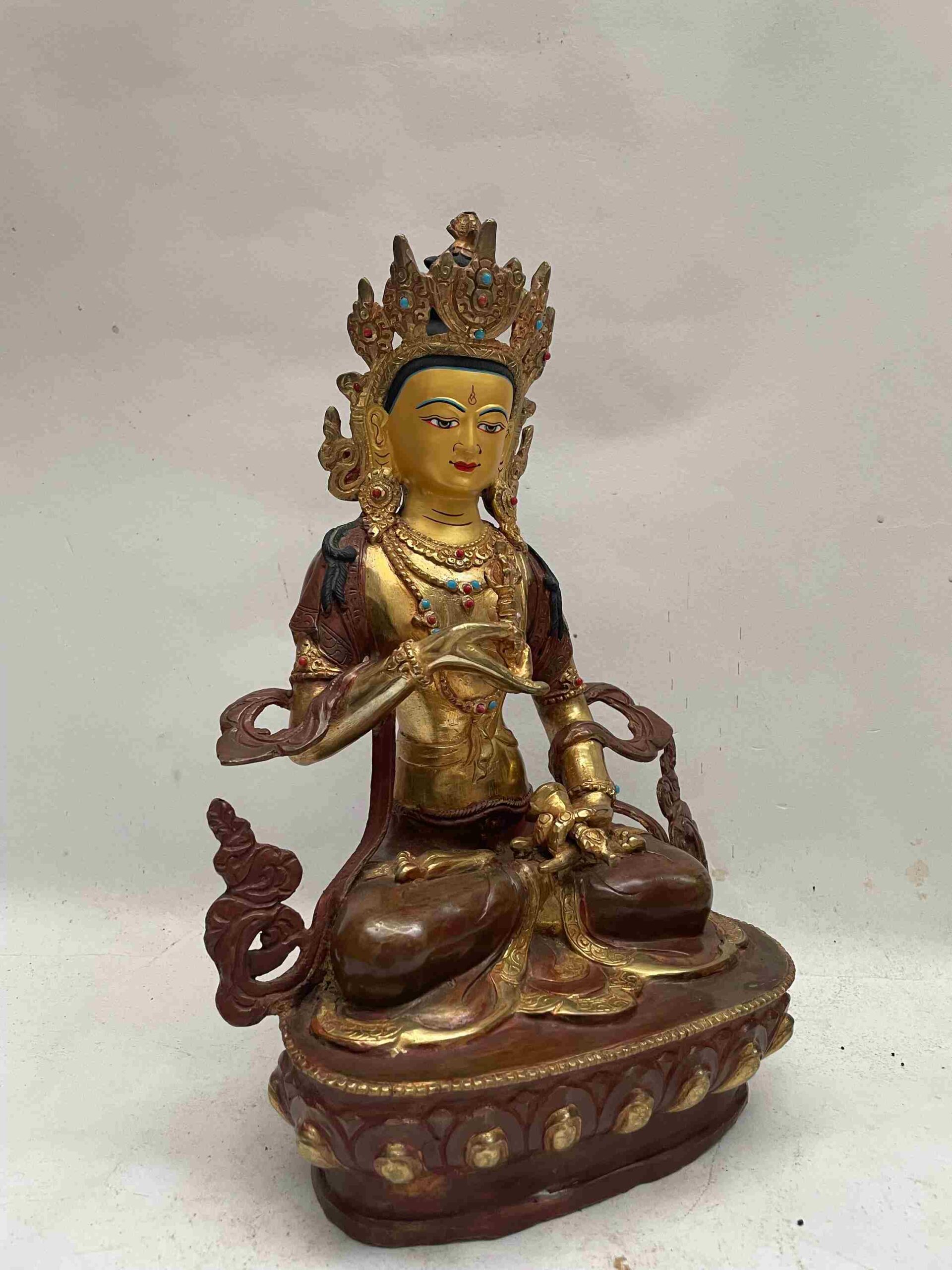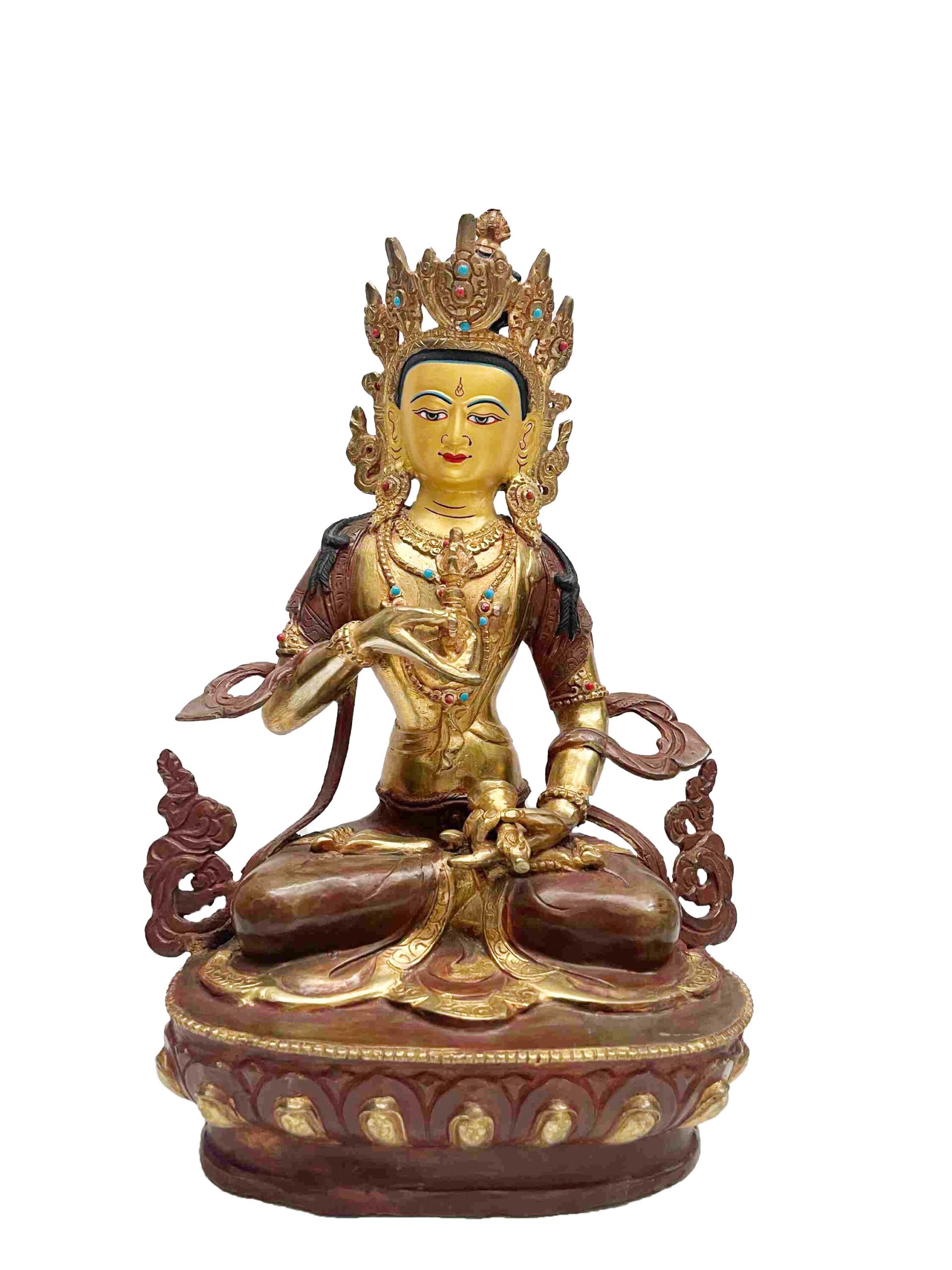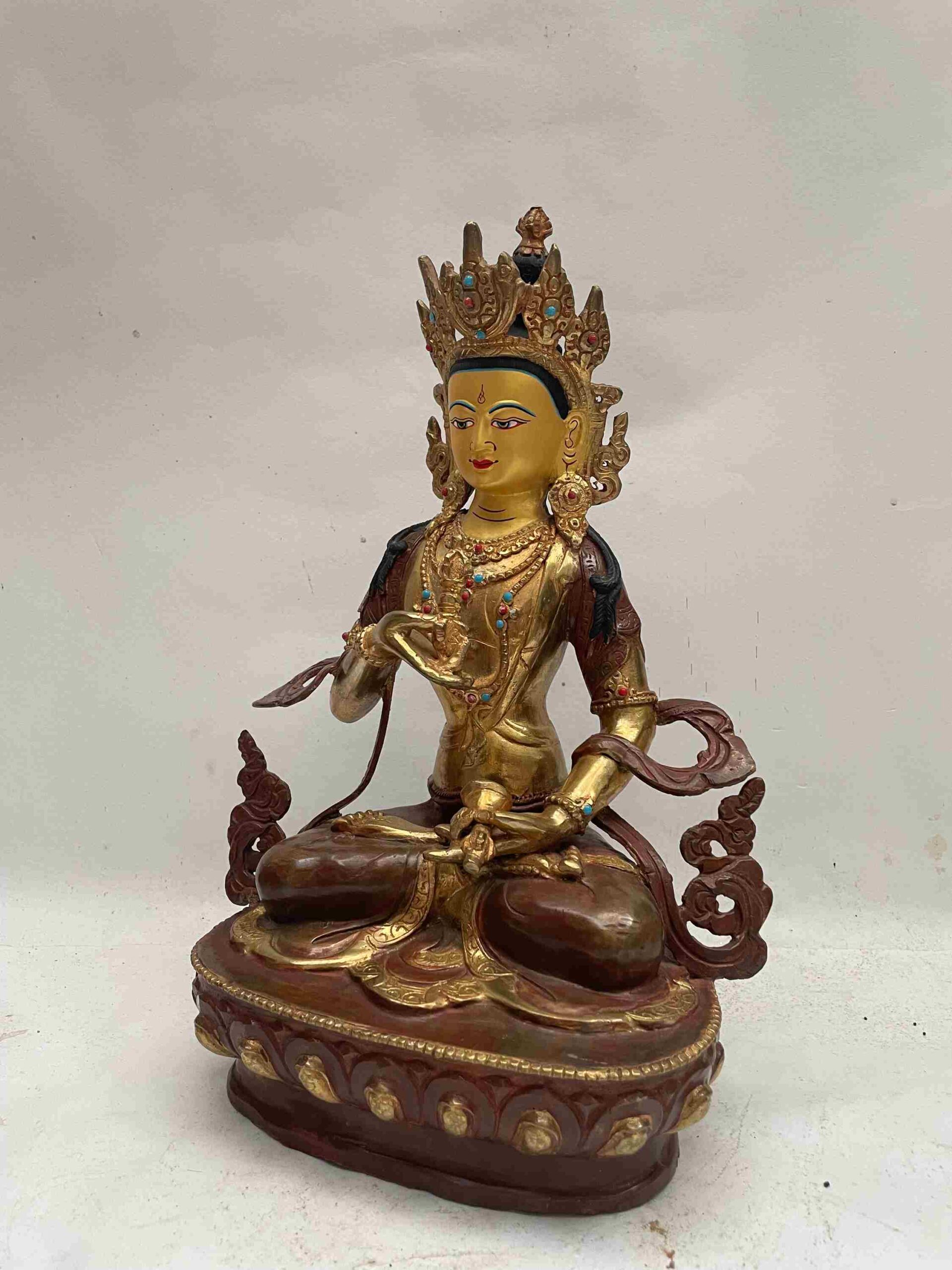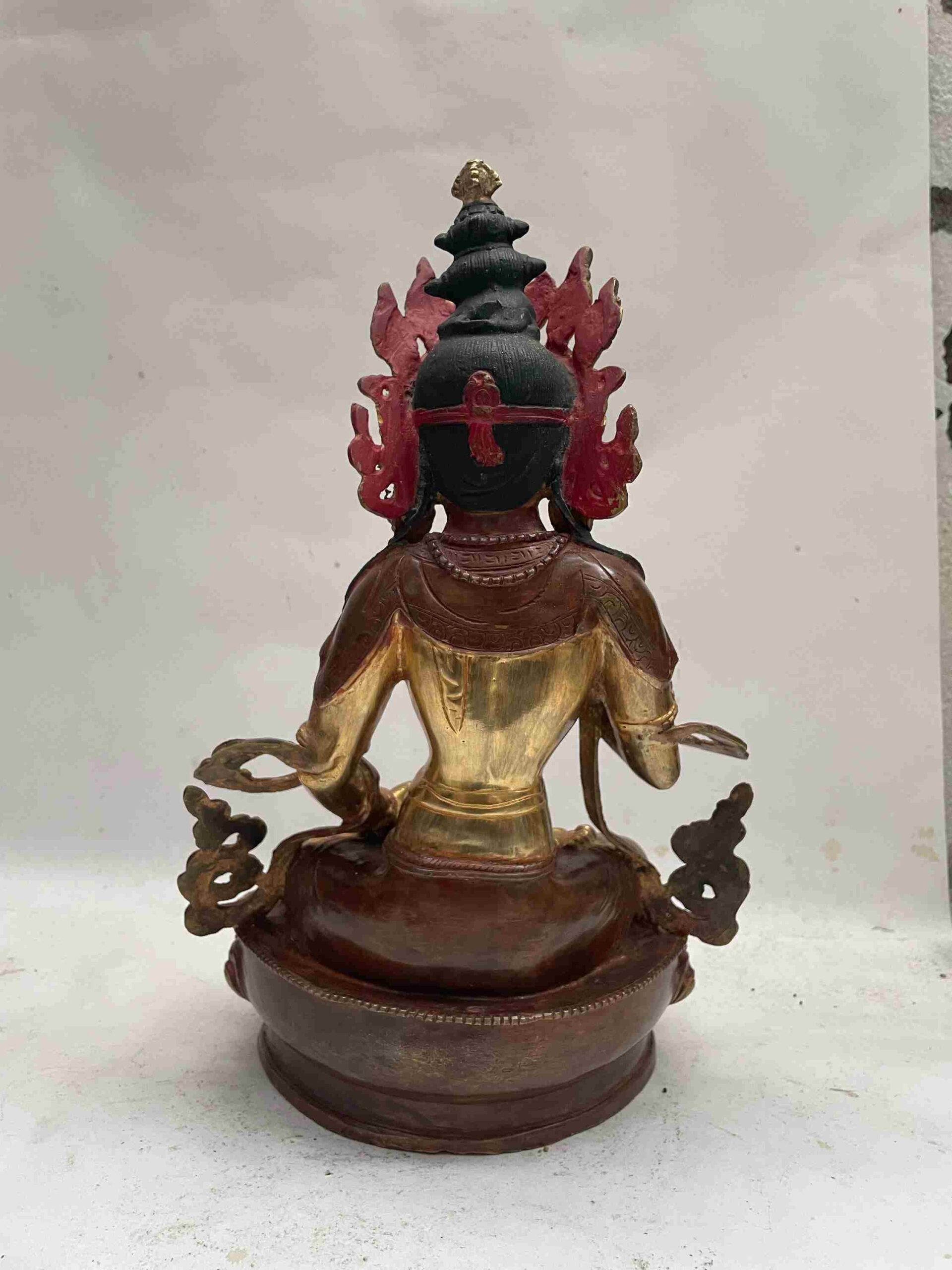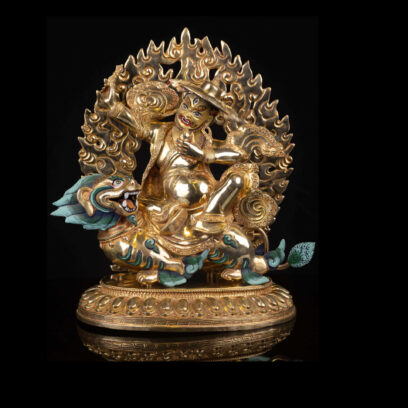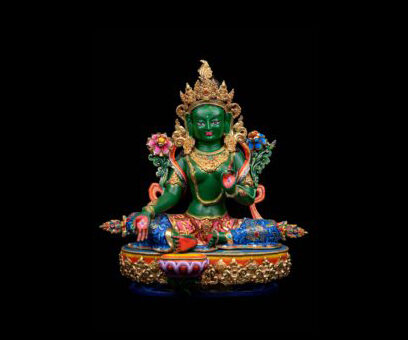Buddhist Handmade Vajrasattva Statue – Partly Gold Plated, Face Painted
-
Item Code: HME26119
-
Weight: 3064 grams
-
Dimensions (cm): 35 x 19 x 13
-
Material: Copper
-
Finish: Partly Fire-Gold Plated, Face Painted
-
Availability: Available
Vajrasattva: The Embodiment of Purity and Transformation
Vajrasattva, a central figure in the Vajrayana tradition, symbolizes purification and spiritual awakening. In the Nepalese Bajracharya lineage, he is often regarded as the Adi-Buddha, based on sacred texts such as the Vajrasattva Kaya.
He is depicted with a white body, one face, and two hands. In his right hand, he holds a five-pronged golden vajra close to his heart, while his left hand holds a silver bell at his side. Seated in the Vajraparyanka posture, Vajrasattva is adorned with precious silks, ornaments, and a jewel diadem. His radiant form, adorned with the marks of a Sambhogakaya, emits limitless, clear light—symbolizing a nature that transcends substance, like a reflection in water.
Though Vajrasattva also has a father-mother (yab-yum) aspect, this form is traditionally reserved for initiates of the Highest Yoga Tantra. In such depictions, his consort holds a kartika and a kapala, reflecting the union of wisdom and compassion.
Gold-Painted Face
The face of the statue is painted with gold, enhancing the expressiveness of the eyes and lips—features that metal alone cannot fully capture. This process not only brings the statue to life but also prepares it for spiritual practice and consecration. In Buddhist tradition, painting the face with gold is a sacred ritual that reflects devotion, artistry, and the spiritual vitality of the deity.
Partly Gold-Plated Finish
The statue features a partly gold-plated surface, achieved through a traditional Nepali fire gilding technique. Artisans use a resist to protect selected areas, allowing gold to adhere only to the intended parts. This creates a powerful visual contrast between the lustrous divine body and the darker, painted attire, symbolizing the purity of enlightenment versus the humility of the monastic path.
Lost-Wax Casting Method
This piece is crafted using the ancient lost-wax casting method. The process begins with a detailed wax model, which is coated in layers of ceramic to form a mold. Once cured, the wax is melted away and molten metal is poured into the cavity. After cooling, the ceramic mold is removed, revealing the intricately detailed copper statue beneath.
